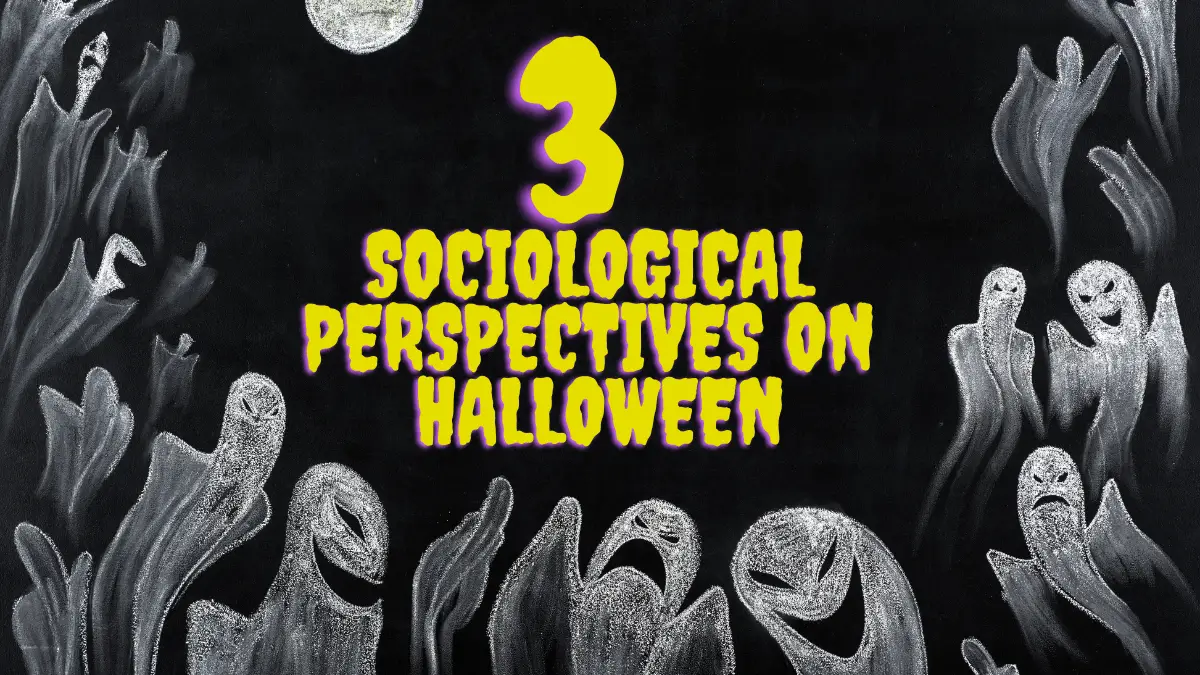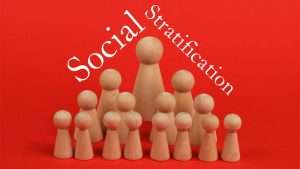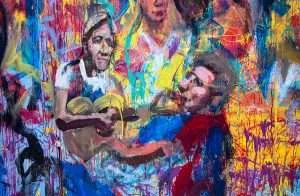Sociology is a science of many paradigms, conveniently suited to provide varying perspectives on a single topic. So, how can we analyze Halloween from three different sociological perspectives? Keep reading to learn more about what structural functionalists, conflict theorists, and symbolic interactionists might say about this sweet-tooth-enabling and spooky holiday!
Structural Functionalism and Halloween
What is Structural Functionalism?
Structural functionalism is a sociological theory that views society as a system of interconnected parts, each of which plays an important role in maintaining the stability and functioning of the whole. The theory is often credited to Émile Durkheim and other influential sociologists such as Talcott Parsons, and it remains one of the most influential theoretical frameworks in sociology today.
The most common way folks discuss structural functionalism is through the perspective that everything in society has a function, whether it’s obvious or not. For example, deviance serves the function of enforcing social norms. Sometimes, sociologists also discuss functionalism through the imagery of multiple cogs working together to keep society functioning. The “Social System” in Parsons’ Systems Theory is a major example of this perspectives (as seen in the graphic below).

How Can Structural Functionalism Be Used to Analyze Halloween?
Structural functionalists argue that Halloween serves a number of important functions in society, including:
1. Providing a safe and controlled outlet for people to explore their fears and anxieties.
The holiday’s emphasis on costumes and role-playing allows people to experiment with different identities and personas without fear of judgment. This environment can be a valuable way for people to process difficult emotions and confront their fears in a safe and supportive environment.
For example, a child who is afraid of the dark may choose to dress up as a monster for Halloween. This can help them to face their fear in a controlled setting and learn that the dark may not be as scary as they once thought.
2. Reinforcing social norms and values, such as the importance of sharing and community.
A structural functionalist might argue the tradition of trick-or-treating teaches children the importance of sharing and giving back to their community. Halloween parties also provide an opportunity for people to come together and socialize with their neighbors and friends.
For example, when children go trick-or-treating, they are taught to say “please” and “thank you” and to respect the property of others. They also learn to share their candy with their siblings and friends. Halloween parties can also help to build community spirit by bringing people together from different backgrounds to celebrate a common event.
3. Promoting social solidarity by bringing people together from different backgrounds to celebrate a common event.
The holiday is celebrated by people of all ages, races, religions, and nationalities. This diversity can help promote understanding and tolerance between different groups in society.For example, in many communities, there are annual Halloween parades or festivals that are open to everyone. These events provide an opportunity for people from all walks of life to come together and celebrate the holiday.
Implications of Structural Functionalism for Halloween
In addition to the functions listed above, structural functionalists also argue that Halloween has a number of latent functions, or unintended consequences. For example, the holiday can help to boost the economy by stimulating sales of costumes, candy, and decorations. Halloween can also help to promote creativity and self-expression, as people use their imaginations to come up with unique and elaborate costumes. However, the holiday can also reinforce gender and ethnic stereotypes through the tradition of costumes.
With that said, structural functionalism is not without its critics. Some critics argue that the theory is too simplistic and does not adequately account for the role of conflict and power in society. Others argue that the theory is too focused on maintaining the status quo and does not adequately challenge social inequalities.
Despite its limitations, structural functionalism remains a useful framework for understanding the social functions of holidays such as Halloween. By examining the holiday through a structural functionalist lens, we can better understand how it contributes to the stability and functioning of society.
Read: The Sociology of Halloween: Urban Legends & Social Problems
Conflict Theory and Halloween
What is Conflict Theory?
Conflict theory is a sociological theory that views society as structured by a system of groups with unequal power fighting over scarce resources. The theory is mostly credited to Karl Marx and his writings on capitalism, and it remains one of the most influential theoretical frameworks in sociology today. While Marx initially used the language of Bourgeoisie and Proletariat to explain the major class conflict in society (as seen in the graphic below), contemporarily we can think of the division as an elite class versus the average working people.

Conflict theory has evolved rapidly since its inception and now often encourages a closer look at all systems of inequality, including gender, race, ability, and more. In this way, it provides a useful lens for interrogating Halloween more critically than structural functionalists might.
How Can Conflict Theory Be Used to Analyze Halloween?
Conflict theorists might argue that Halloween can be seen as a holiday that reflects and reinforces the power dynamics of the social hierarchy. For example, the holiday’s traditions are deeply entrenched in capitalism, requiring extra production, labor, and economic capital to support them.
Below are a couple specific examples of how conflict theory can be used to analyze the holiday of Halloween:
1. Celebrating Halloween requires a certain level of participation in capitalism, and therefore in an oppressive system.
To participate in this holiday, one must participate in the purchasing of goods of some kind. Those goods could include candy, decorations, costumes, pumpkins, or tickets to haunted houses and horror movies, among others. While one could argue that we are forced to participate in the global capitalist system on a daily basis, especially if we are living in a major capitalist nation like the U.S., a holiday like Halloween exacerbates the expectations of our participation. Whether we see that participation as a problem or not comes down to whether we subscribe to a conflict theory perspective or not.
2. Halloween can provide a useful lens for analyzing power dynamics within a society.
For example, some Halloween costumes and decorations can be seen as reinforcing negative stereotypes about marginalized groups. In the US, some white people dress up in costumes that depict Native Americans, Mexicans, or other marginalized groups in a stereotypical and offensive way. These costumes can help to perpetuate harmful stereotypes and contribute to the marginalization of these groups, especially when worn by groups with more social and economic power, such as middle and upper-class white Americans.
These costumes are not only disrespectful, but they can also be harmful to the people who are stereotyped. By perpetuating these stereotypes, these costumes can make it more difficult for marginalized groups to achieve equality and respect.
Implications of Conflict Theory for Halloween
Conflict theory provides a useful framework for understanding the power dynamics of holidays such as Halloween. By examining the holiday through a conflict theoretical lens, we can better understand how it reflects and reinforces the power dynamics of various social systems, whether that system be capitalism or racism.
Furthermore, conflict theory can help us to identify and challenge harmful stereotypes and discriminatory practices that may be associated with the holiday. For instance, by raising awareness of the potential harm caused by certain Halloween costumes, we can encourage people to make more thoughtful and inclusive choices that rely less on the oppression of certain groups.
In this way, we can use conflict theory to make Halloween a more inclusive and equitable holiday for everyone. As individuals and members of organizations, we can encourage people to avoid costumes that reinforce negative stereotypes about marginalized groups. We can also draw attention to the role of capitalism in the holiday, shedding slight on potentially exploitative practices that support Halloween.
Read: Sociology and Halloween: The Need for Sociologists
Symbolic Interactionism and Halloween
What is Symbolic Interactionism?
Symbolic interactionism is a sociological theory that focuses on the ways in which people create and interpret meaning through their interactions with others. This broad theoretical perspective was developed by George Herbert Mead and other early sociologists such as Erving Goffman and Charles Horton Cooley, and it remains one of the most influential theoretical frameworks in sociology today.

How Can Symbolic Interactionism Be Used to Analyze Halloween?
Symbolic interactionists argue Halloween is a holiday rich in symbolism and meaning. The holiday’s costumes, decorations, and rituals all serve to communicate specific messages about the nature of good and evil, life and death, and the supernatural. Different cultures may even have certain rituals or decorations specific to the meanings they associate with the holiday.
Here are some specific examples of how symbolic interactionism can be used to analyze the holiday of Halloween:
1. Halloween costumes can be used to portray a variety of identities and personas.
People may dress up as their favorite characters from movies, books, or video games. They may also dress up as historical figures or celebrities. Additionally, people may dress up as monsters, ghosts, or other supernatural creatures. In choosing a costume, people are also choosing to portray their interests and identities in a specific light. Goffman, for example, might say they are partaking in impression management. For instance, someone who dresses up as their book character is showing their peers that they value reading and expressing what genre of books they enjoy.
2. Halloween-related rituals and activities can help us understand how social norms are created and reinforced.
Costumes can also be used to challenge social norms and expectations. For example, a person who typically dresses in a conservative manner may choose to dress up in a more revealing costume on Halloween. This behavior is a typical example because Halloween gives people the excuse to forgo some social norms.
Simply wearing a costume of any kind in public would be breaching multiple social norms on most days. But during Halloween festivities, not only are costumes acceptable—they are expected. At a Halloween party, someone wearing a costume symbolizes normalcy. Any other day, the same costume would signal abnormal behavior.
Implications of Symbolic Interactionism for Halloween
Symbolic interactionism provides a useful framework for analyzing the shared meaning creating through holidays like Halloween. By examining the holiday through a symbolic interactionist lens, we can better understand how people use symbols and rituals to create and interpret meaning and social norms.
Symbolic interactionism can also help us to appreciate the diversity of ways in which people celebrate Halloween. There is no one right way to celebrate Halloween. People from different cultures and backgrounds have different traditions and customs associated with the holiday. Symbolic interactionism can help us to understand and respect these differences.
Final Thoughts on Sociological Perspectives on Halloween
Sociological theories provide incredibly diverse lenses for analysis of a single event or topic, such as Halloween. By looking at just three major sociological perspectives, we are able to analyze the holiday of Halloween in a variety of ways. Structural functionalism helps us dissect the social functions of the holiday. Conflict theory allows us to uncover the power dynamics embedded within the celebration. Symbolic interactionism reveals the ways we create meaning and social norms in and through the holiday.
This blog covered just a few examples of each theoretical perspective on Halloween, but how else might sociological theories be used to analyze halloween?
Read: Social Science and Halloween from Multiple Viewpoints
General Halloween Facts
Enjoy these general Halloween facts from Applied Worldwide on Youtube shorts!!







